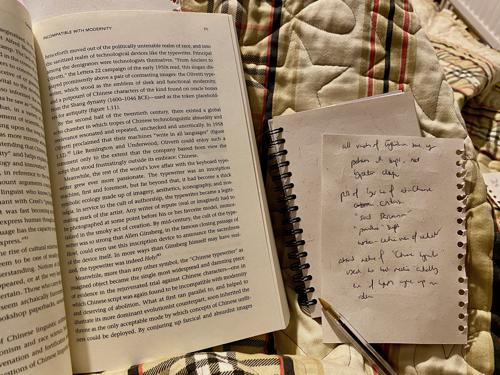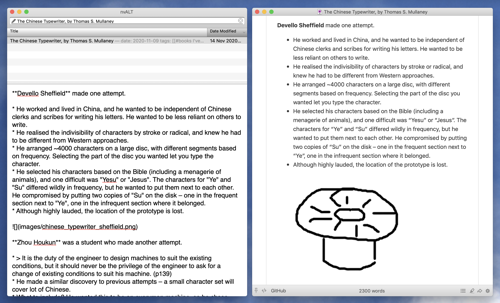How I read non-fiction books
I’ve spent a lot of this year reading books. That was the plan, even before the pandemic – I have a large pile of unread books – and then I just got more time to read than I expected.
We all have an idea of what “reading a book” means, but it means different things to different people. Everyone has their our own styles and approaches to reading, and there’s no one right way to read a book. I’ve developed a bit of a process around how I read – particularly around non-fiction books – and in this post I’m going to explain that process.
But before we ask how to read a book, we need to ask: why do we read books? There are lots of reasons you might read a book, and they’ll affect what you want to get out of a book, and how to approach it. My process works for me, and lets me get what I want out of books – but it may not work for you, if you read for different reasons.
Most of my non-fiction reading is for pleasure. I don’t need to remember everything in detail, and I have no immediate use for the information. But I do want to remember the key ideas, and I want to be able to find a book again later, if there’s an idea I want to revisit.
When I’m reading, I keep a notebook and a pen to hand. At the end of each section or chapter, I scribble a few notes, and move on. I’m trying to capture the major ideas, interesting stories, or passages I want to save verbatim.

My initial notes are handwritten because handwriting is flexible – I can write sentences, or fragments, or even sketch tiny diagrams. It’s a minimal interruption from looking at the book. I’ve tried using a variety of digital devices for this step, but they’ve never worked as well.
Every so often, I take my pile of handwritten notes, and I type them into my computer. I turn them into full sentences, add any extra details I thought were worth noting, and generally tidy them up. I’ll even recreate diagrams if I find them useful.

When I type up my notes, I include chapter names, page numbers, and occasionally a passage quoted word-for-word. Combined with full text search, this gives me something to skim to remember “What did I learn from this book?”, and pointers to the parts to re-read if I want to find a specific story or detail.
I never actually write in my books. I understand why people do that, and if I was using a book as a detailed reference I might try it – but it’s overkill for what I want. I want notes that I can read for basic recall, not a comprehensive list of everything explained in the book. I can skim much faster if all the notes are in one place, not scattered through the book. (I also give away a fair number of books once I finish them, so it’s useful to have the notes separate from the book.)
This process slows me down, but it dramatically improves my retention rate. Since I started doing this, I’ve been much better at remembering the main ideas of the books I’ve read – and notes plus memory are a powerful combination for storing the details. ✨